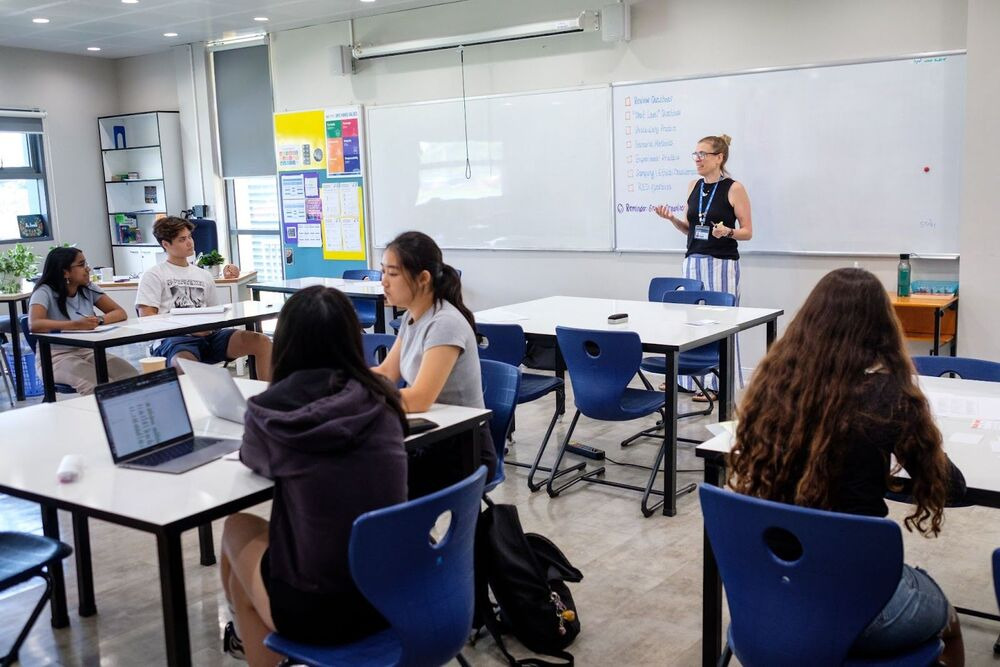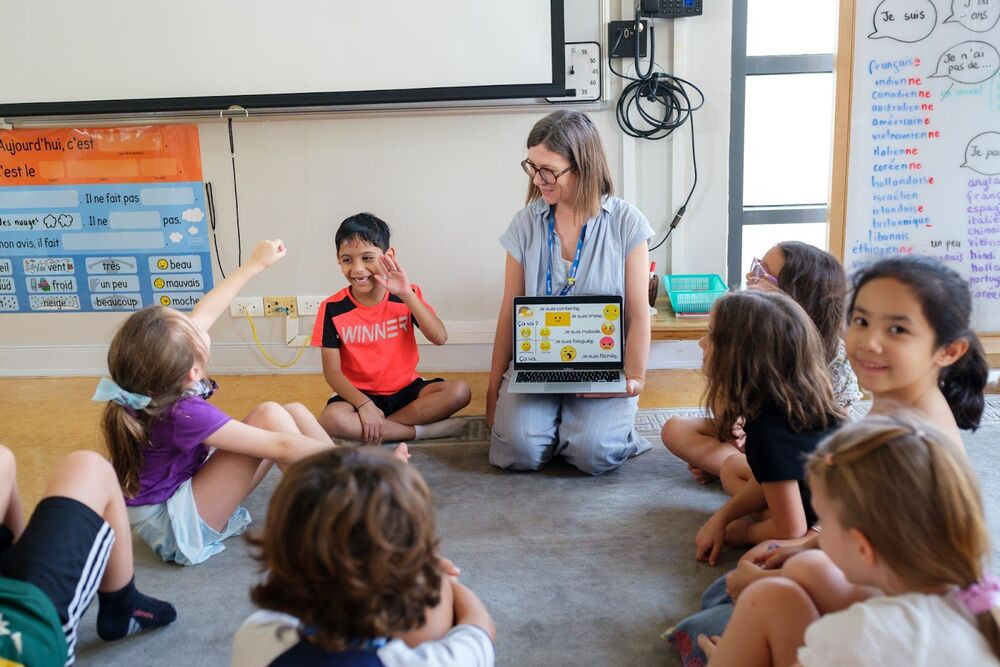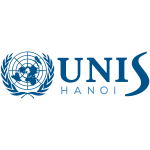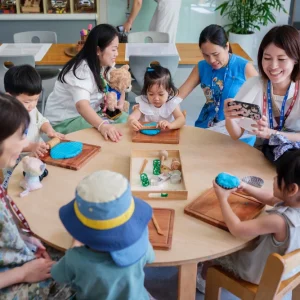The Measures of Academic Progress (MAP) test is an adaptive assessment designed to measure students’ academic achievement and growth over time. Developed by the Northwest Evaluation Association, MAP provides educators and families with detailed insights into a child’s strengths and areas for development.
In this guide, we explore what MAP testing is, its purposes, how to prepare, and how UNIS Hanoi uses MAP data to personalise education and foster each student’s success.
What is MAP Testing?
MAP Testing is a computer-adaptive assessment that evaluates achievement for individual learners in subjects such as reading, language usage, and mathematics for different grades.
MAP assessments are unlike fixed-designed tests as the questions change based on how the student responds to each question. As a result, they provide a reliable measurement of the student’s current proficiency.
As students answer correctly, the software selects more challenging items; incorrect responses lead to easier questions, allowing for precise mapping of academic growth.

Schools use MAP results to align instruction with global standards and to place pupils in appropriate learning pathways. Each MAP assessment covers three core domains: Reading, Language Usage, with Science included in select administrations.
Students typically complete MAP tests twice a year, with each session lasting approximately 45–60 minutes and untimed to minimise stress.
With a MAP testing score, educators and parents can track children’s academic strengths and learning gaps. This personalised insight is one of the core aims of MAP testing, as we will explore further below.
Purposes of MAP Testing
The main aim of MAP Testing is to provide educators, families, and learners with insightful data that drives instructional decisions and fosters academic growth.
By creating instructions around each student’s readiness level, MAP assessments facilitate targeted instruction and measurable growth.

Below are primary purposes of MAP testing:
- Personalised Learning Plans: MAP data identifies individual strengths and gaps, allowing teachers to tailor instruction to each learner’s needs.
- Goal Setting and Growth Tracking: RIT scores establish clear benchmarks for expected growth. Students and teachers set realistic goals and monitor progress over time.
- Immediate Feedback: Upon completion, adaptive testing yields instant performance reports, enabling prompt intervention and support where required.
- Parental Involvement: MAP detailed reports encourage meaningful family–school partnerships, as parents can celebrate successes and support areas requiring additional practice.
By integrating these functions, MAP testing helps create a responsive educational environment that empowers teachers, administrators, and parents to take actionable steps.
How Parents Can Support Their Children with MAP Testing
Parents play a vital role in ensuring that MAP assessments accurately reflect their child’s abilities and growth. Below are two key areas where parental support is particularly valuable.
Preparing for the Test Day
Good preparation begins well before assessment day. A calm, confident child is more likely to engage fully and perform to their potential.

To prepare your children for the test day, parents can:
- Ensure sufficient sleep. Younger children benefit from 10-11 hours of sleep per night, and teenagers from around 8.5 hours to support concentration and memory consolidation. Well-rested students can focus more effectively and better manage social challenges such as peer pressure in teenagers, which may otherwise affect their emotional readiness and academic engagement.
- Provide a nutritious breakfast. Serving oatmeal or yoghurt with fruit supplies steady energy and essential nutrients without a sugar crash, which has been shown to improve morning cognitive function.
- Encourage physical activity. A brief routine of stretching, a family walk, or playful exercise releases endorphins, reducing test-related stress and sharpening focus.
- Maintain a positive attitude. Emphasising effort, learning, and personal growth over scores cultivates a growth mindset, which research links to greater motivation and resilience in children.
Supporting Language, Reading, and Math Skills
Helping your child build their reading, writing, and maths abilities at home doesn’t have to be formal or difficult. Regular, low-pressure activities make learning enjoyable and reinforce key skills tested in MAP assessments.

Here are several ways that parents can support their children:
- Engage in daily reading: Reading for at least 15-20 minutes daily increases vocabulary and text comprehension, which improves literacy outcomes, especially when students read picture books or even articles for older students.
- Use math games to teach concepts: Conceptual maths like doubling and halving recipes become practical and fun when applied in the kitchen, promoting numerical reasoning through engaging hands-on activities.
- Encourage regular writing: Journals or friendly letters provide informal, stress-free outlets for children to organise thoughts and practise spelling and grammar, enhancing their written language skills.
- Play word games: Simple games like those offered by the British Council or homemade vocabulary quizzes immerse children in new terms and definitions, boosting word knowledge in a fun, low-stakes format.
By integrating these practices into family routines, parents create a low-stress, enriching environment that complements in-school learning and keeps pupils actively developing core competencies.
How UNIS Hanoi Integrates MAP Testing
At UNIS Hanoi, we view MAP Testing as an integral component of our student-centred pedagogical model.
Our school employs the MAP Screener, a concise form of the MAP Growth Assessment designed to quickly identify incoming pupils’ academic levels during the admissions process. This screener evaluates language, reading, and mathematics with sufficient precision to guide placement decisions and tailor initial learning plans.

Our educational philosophy emphasises individualised, skills-based learning where each learner’s progress informs subsequent instructional design.
By integrating MAP assessment data into our continuum of learning, we can track growth in discrete skills and pinpoint specific areas for targeted intervention. Teachers analyse RIT trajectories alongside IB framework benchmarks to align curriculum delivery with each student’s readiness and potential.
Furthermore, our collaborative Professional Learning Communities utilise MAP results to reflect on teaching strategies, evaluate programme efficacy, and share best practices across departments.

Regular MAP administrations throughout the year enable us to measure the impact of instructional adjustments in near real-time, ensuring our learners receive the support they need to thrive academically and personally.
We also actively involve families by sharing comprehensive MAP reports and discussing growth goals during parent-teacher conferences. This partnership fosters a shared understanding of student needs and reinforces our commitment to continuous improvement.

Through the strategic use of MAP assessments, UNIS Hanoi upholds our mission to cultivate curious, capable, and confident learners equipped for success in the IB Programme and beyond.
By joining us, your child benefits from a tailored education grounded in international standards. Apply now and become part of our dynamic, forward-thinking school community!
Author Profile

- UNIS Hanoi is ever-evolving, but one thing that remains is our passion to nurture and equip students to be agents of change for a better world.
Latest entries
 Calendar, News and Publications30 Oct 2025What is an IB School? A Complete Guide for Parents
Calendar, News and Publications30 Oct 2025What is an IB School? A Complete Guide for Parents Calendar, News and Publications29 Oct 2025School Tour at UNIS Hanoi – A Comprehensive Guide for Parents
Calendar, News and Publications29 Oct 2025School Tour at UNIS Hanoi – A Comprehensive Guide for Parents Calendar, News and Publications28 Oct 2025How to Choose the Right School for Your Child: The 2025 Guide
Calendar, News and Publications28 Oct 2025How to Choose the Right School for Your Child: The 2025 Guide Calendar, News and Publications27 Oct 2025Student Recruitment at UNIS Hanoi: A Parent’s Comprehensive Guide
Calendar, News and Publications27 Oct 2025Student Recruitment at UNIS Hanoi: A Parent’s Comprehensive Guide